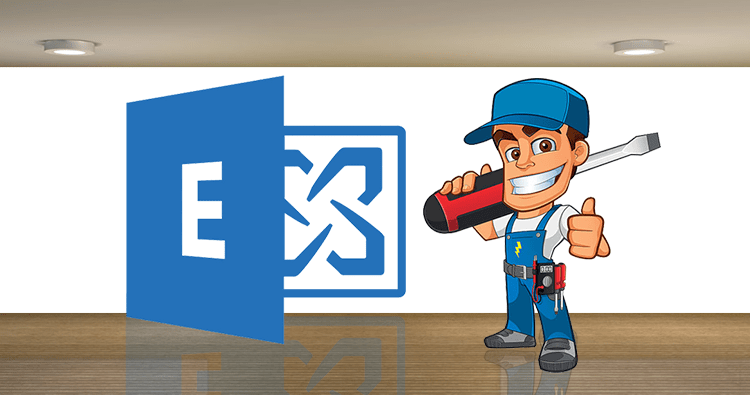Method to Recover Deleted Mailboxes from Exchange 2016

Exchange Server is the most frequently used email server in a variety of organizations. It is vital to control and control the server to prevent any unlucky circumstance which could result in data loss. There are few mistakes that users discover after a while, like deletion of mailboxes in Exchange Server or server crash down and so on. Users must recover deleted mailbox items that were accidentally or intentionally deleted. It is also possible for users to backup Exchange Server2016 using Windows Server backup. In the majority of questions we receive about deleted mailboxes from Exchange 2016 let us discover the best solution.
Recover Deleted Mailboxes from Exchange Server?
When a user deletes any Exchange mailbox, the deleted mailbox remains within the database of mailboxes, but is classified as being in disabled status. The default setting for Exchange Server is disable. Exchange Server has a retention period of approximately 30 days within the Deleted Folder.
How can I configure Exchange mailbox retention time within Exchange 2016?
Exchange administrators and users can set the retention time of Exchange mailboxes by using Exchange Admin Center or Exchange PowerShell. Let us know the ways one-by-one.
Utilizing Exchange Admin Center
- Start your Exchange Admin Center of your Exchange Server using the administrator credentials.
- Click on the servers tab in the left panel. Click onto the databases tab. Next, you must select your database’s name and then click edit option.
- Choose the limit option on the left side then, under Keep mailboxes deleted (for the duration of), enter the number of days, and select Save option.
Utilizing Exchange Management Shell
Start your Exchange Management Shell as the administrator. After that, execute the following commands.
If you have a single mailbox, execute this command.
“Set-Mailbox -Identity “User Mailbox Name” -RetainDeletedItemsFor 30″
If you have multiple mailboxes, run the command below.
“Get-Mailbox -ResultSize Unlimited -Filter | Set-Mailbox -RetainDeletedItemsFor 30”
This method, you can alter your retention time for deleted Exchange user mailboxes , and gain more time to recover of lost mailboxes.
NOTE: The maximum limit to determine the retention time of deleted Exchange Server mailboxes is 30 days.
Recovery of deleted Exchange mailboxes 2016
It is important to note that the deleted Exchange mailboxes also include disconnected Exchange mailboxes, which you can reconnect to using either the Exchange Admin Center or Exchange Management Shell. You can also set up an account for yourself and then keep login in Active Directory to which you would like to connect the deleted mailbox. It must be deactivated or not enabled.
Restore mailbox that has been deleted via Exchange Admin Center
Follow these steps to recover deleted Exchange mailbox:-
- Begin your journey to the Exchange Admin Center of your Exchange company with administrator credentials.
- Navigate to Recipients > Mailboxes. After that, click on the More… option and then click Connect to a mailbox option.
- Then, from the drop-down menu of mailboxes (disconnected or disabled, deleted and soft-deleted mailboxes) select the mailbox that you deleted and click the Connect option.
- Confirm the connection by clicking on the Yes option in the dialog box.
- Choose user account deleted mailbox must be linked. Select “OK”.
- Account that was deleted will be associated with the selected user’s mailbox. This will be effective.
Restore Mailbox that was deleted using Exchange Management Shell
The first step is to run your Exchange Management Shell as an administrator.
Connect-Mailbox -Identity “” -Database -User “” -Alias
Connecting the mailbox using Exchange Server Manager
Exchange users can connect the mailbox deleted to their user account by following the following procedure.
- Start Exchange Server Manager on your system.
- Transfer towards the mail store which contains the deleted or disabled Exchange mailboxes.
- Click on the Mailboxes option, then select the Cleanup Agent option by clicking on the right click button mailboxes.
- Then, enter the username of the account for which you wish to connect your mailbox. Click “OK”.
Notification: To recover or reconnect deleted mailboxes in Exchange 2016 to an existing user mailbox first, you must create a brand new user object in Active Directory Users and Computers. The rest of the process for reconnecting the mailbox deleted is the same as previously.
Tips to retrieve deleted data out of Exchange 2016 mailboxes
- Launch your MS Outlook application linked with your Exchange Server account.
- Navigate to the deleted items folder, and then select the items you want. Select one of the options Recover deleted items.
- Then, you’ll be able to choose the deleted items, then either restore the items or purge (permanently erase) it permanently.
- Hit OK and then.
Note: If you have deleted the mailbox items from the Deleted Items folder as well, then also you can recover these items as it moves from there to the Deletions/Recoverable Items folder but only if the retention period is not over.
Most efficient method to retrieve deleted mailboxes from Exchange 2016
Exchange Recovery tool is not only able to recover damaged but also the retrieval of user mailboxes permanently deleted within Exchange Server. It is compatible across every Exchange Server versions including Exchange 2016 and Exchange 2019. Through the use of sophisticated programming and the delicate interface, recovery is quite simple and effective. Users are able to choose whether to do or not do using the advanced filters available.
You are able to visit the website of the software and learn about the functions and features of the program. You can download the trial version and use the software features. Now, forget about any concerns of deletion, accidental or otherwise from the Exchange users’ mailboxes.




